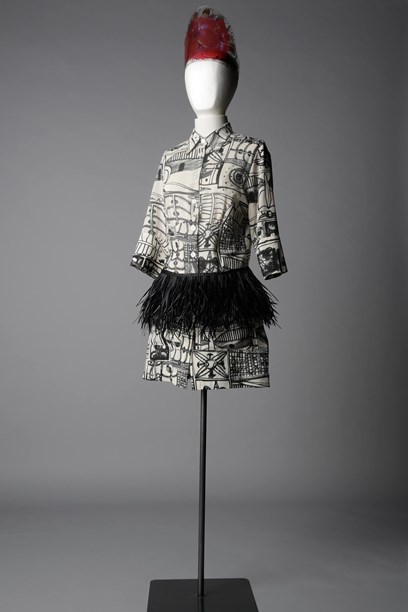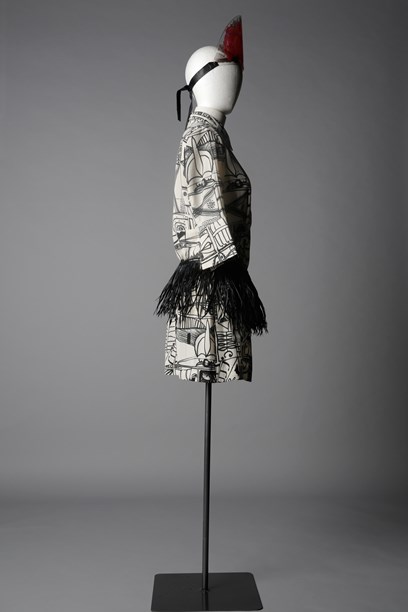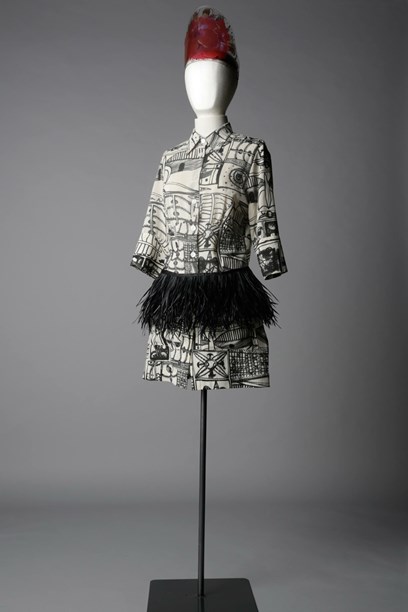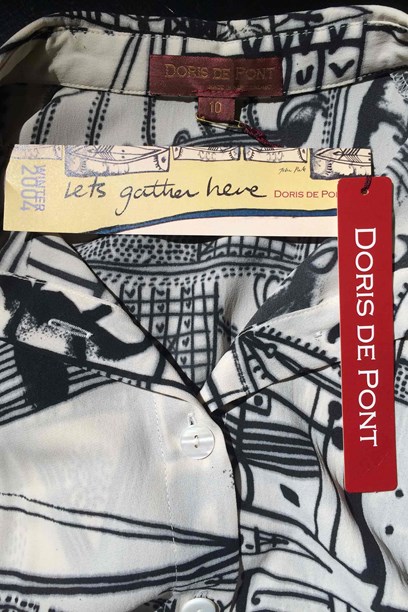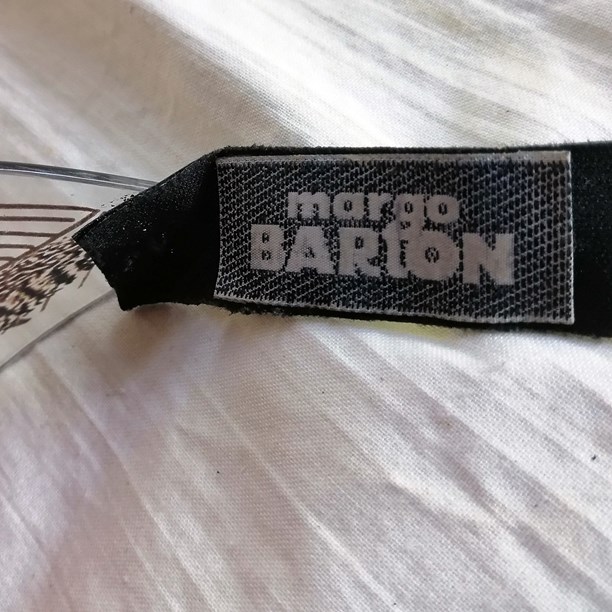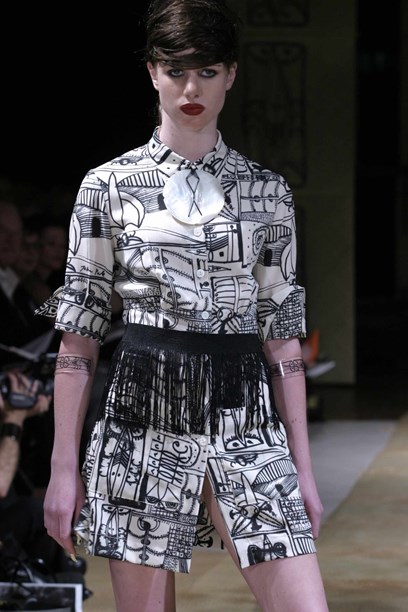Collection item
Superette shirt with titi & headdress
Doris de Pont's Let's Gather Here Winter 2004 collection was first seen at L'Oreal New Zealand Fashion week in an off-site show at St Kevin's Arcade on K Road. The soundtrack with music by Many Hands, an Auckland based group that mixes highland bagpipes, Rarotongan log drums, Chinese Guzeng, electric and acoustic guitars, flute and many other instruments created a sound perfectly suited to the theme of coming together. "With Auckland landmark, the Skytower, illuminated in the background the atmosphere was perfectly suited to the theme, Let’s Gather Here, in a place where all races, cultures and genders mix to celebrate their individuality and the cultural enrichment that diversity can generate if we embrace it," Doris says. Born in New Zealand to Dutch immigrant parents, Doris has always been interested in identity and the power of clothing to give expression to that. The Let's Gather Here collection was an opportunity to find and express herself after nine years designing under the label, DNA. "I found the right message to celebrate reclaiming my name and identity in the work of contemporary Niuean/New Zealand artist and writer John Pule." His work was used to create the prints for this collection. Inspired by her creative environment, Auckland’s colourful and multi-cultural K Road where she had her studio, Doris named all the pieces in the collection after places on the street. While the garments are conventionally European, their styling is inspired by Polynesian dressing where, in contrast to the western ideal, the fullness of the waist and hip are accentuated with overskirts and titi. The prints play with the imagery of the Pacific with graphic patterns that reference tattoo and the use of fine needlecord, which is printed to look like tapa cloth. Margo Barton made the headdress. Garments and accessories from the Let's Gather Here collection are in Te Papa Tongarewa Museum of New Zealand and the National Gallery of Victoria. The Superette shirt and titi are in the collection of the Auckland Museum.
Details


